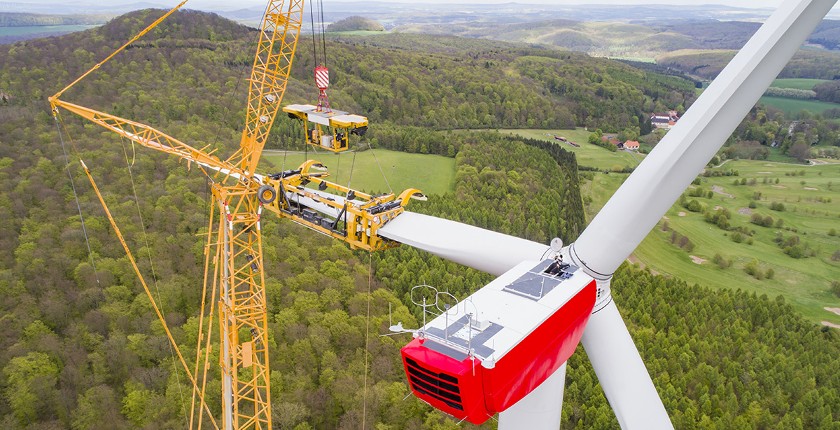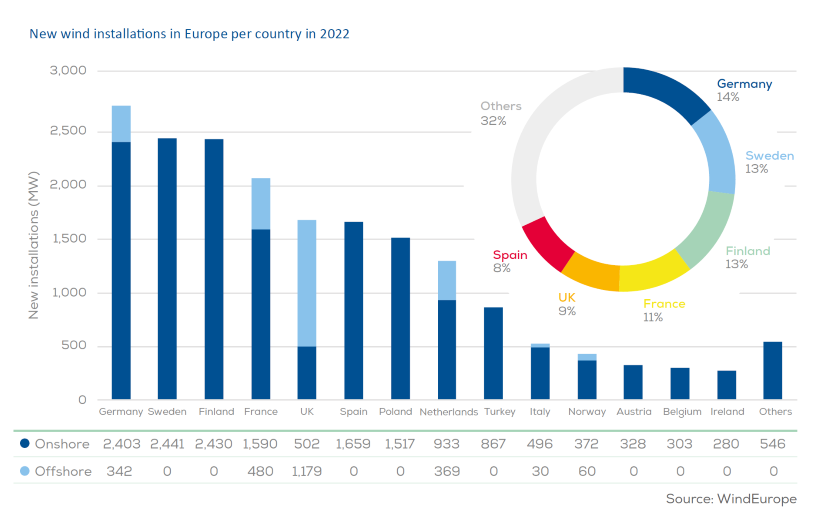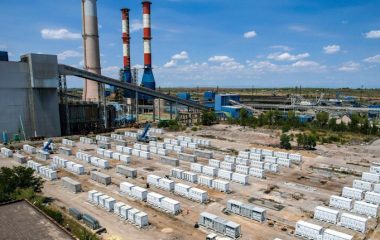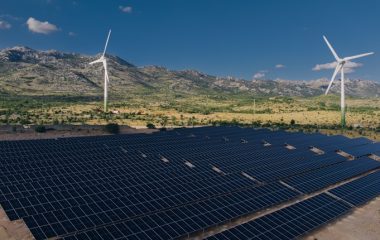
Photo: WindEurope
The European Union and European countries must restore investor confidence in wind power and strengthen the supply chain in the sector to achieve climate goals for 2030, WindEurope said in the report on wind energy installments in 2022.
Europe installed 19 GW of wind power capacity in 2022. The EU accounted for 16 GW or 40% more than in 2021, but still much less than what is needed to achieve its 2030 goals, according to WindEurope.
The organization stressed the EU and national governments must restore investor confidence and support the European wind power supply chain to enable growth.
Germany built the most in the past year, just over 2.7 GW. Sweden and Finland followed with 2.4 GW each, and next is France, with 2 GW.
As much as 87% of the new capacity is onshore wind farms, and the rest is offshore. The United Kingdom has the highest installed capacity in offshore wind farms, 1.2 GW.

Wind energy last year met a record 17% of demand in the EU and the UK, which is an increase of two percentage points.
Denmark has the highest share of wind power in its energy mix, 55%, followed by Ireland, 34%. It accounts for more than 20% of the energy mix in the UK (28%), Germany and Portugal (26%), and Spain and Sweden (25%).
As of today, there is 255 GW of wind capacity in Europe, of which 225 GW is in onshore wind farms, the report said.
Wind energy capacities in the region
In the region that Balkan Green Energy News focuses on, Turkey has the most wind energy, with almost 12 GW. It accounts for 11% of the energy mix.
Greece has 4.68 GW, with a 19% share in the energy mix. Romania has slightly above 3 GW of capacity while Croatia has 1.1 GW and a 13% share in the energy mix.
Bulgaria has 707 MW installed while wind farms in Serbia have a total of 374 MW.
Cyprus has 158 MW of wind so far and Bosnia and Herzegovina hosts 135 MW. There is 137 MW in Kosovo* compared to Montenegro’s 118 MW and North Macedonia’s 37 MW.
Slovenia has only one turbine, with 3 MW, and Albania has none.
According to the report, Turkey added 867 MW in the past year and Greece connected 230 MW to the grid. No other country increased its capacity in 2022.
All wind farms in the region are on the mainland while offshore projects are in an early phase.
In Greece, wind power additions until 2027 are expected to come exclusively from onshore wind, totaling 2 GW. It is set to hold two 600 MW multi-technology tenders this year including wind power, and two 100 MW tenders for small PV and wind power systems. Tenders for at least 500 MW in eligible technologies including wind power were announced for 2024.
Turkey is expected to install 8.2 GW from 2023 to 2027, all of which onshore.
Insufficient new installments to meet climate goals
WindEurope expects 98 GW of new capacities will be installed by 2027 in the EU and 129 GW across Europe. The association said about three quarters should be onshore wind projects.
To achieve the energy and climate goals for 2030, the EU needs to build an average of 31 GW per year.

It could be achieved if Europe continues to simplify permitting rules and procedures, restores clear signals to investors and invests significantly in the wind energy value chain: in factories, grids, ports, vessels, and skilled workers, WindEurope underscored.
Germany is leading the way as it has doubled its rate of new onshore wind permits from three years ago WindEurope CEO Giles Dickson said, adding that the country’s average permitting time has dropped to two years.
The slow pace of permitting remains the number one bottleneck for the sector’s expansion in Europe, Dickson stressed.
Inflation and market interventions undermining investment
The European Commission plans to cover 43% of electricity consumption in the EU from wind by 2030, but new investments and orders for wind turbines are in decline, WindEurope warns.
Last year, only 13 GW of new wind farm investments were announced, without a single offshore project. Also, orders for wind turbines fell by 47% to 11 GW.
The first reason is high commodity and input cost inflation, which increased the price of turbines by 25% to 40%, WindEurope added. Governments must fully index their auction prices and tariffs, the association noted.
The reason for the decline in investments are the interventions in the electricity markets that have undermined investor confidence
Another cause is the “series of unhelpful interventions” in the electricity markets brought by individual countries, which seriously undermined investor confidence, the association claims.
Analysts in WindEurope believe that the EU’s upcoming electricity market design reform must urgently regain confidence. It is necessary to make clear that emergency measures are temporary and must be aligned between member states, they underscored.
The authors also point out it is necessary to strengthen the supply chain because Europe does not have enough factories to build all the turbines needed on the continent.
Contract models are key for new investments
The contracts for difference (CfDs) model, which enables the lowest renewable energy prices and minimizes the costs of new projects, will play a key role for new investments, WindEurope says.
In the CfD model, wind farm operators return the money when the market price is higher than the price obtained at auctions, while the state pays them only when the market price is lower than the auction price. The model is more favorable for the state and consumers than other incentive systems.
WindEurope adds that investors must be allowed to finance their projects through power purchase agreements (PPAs) and on a merchant basis if that is what best works for the investors.


















Be the first one to comment on this article.